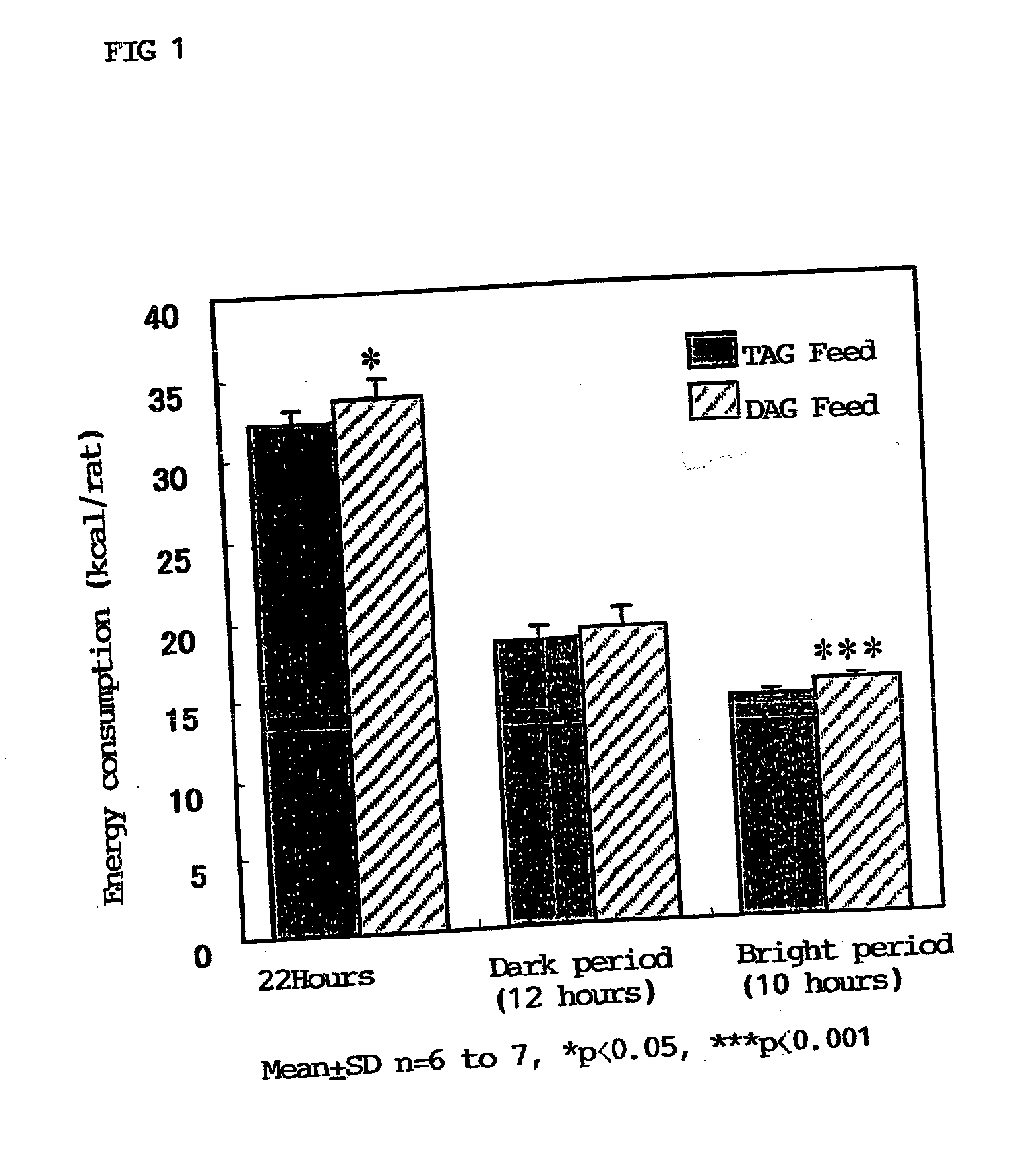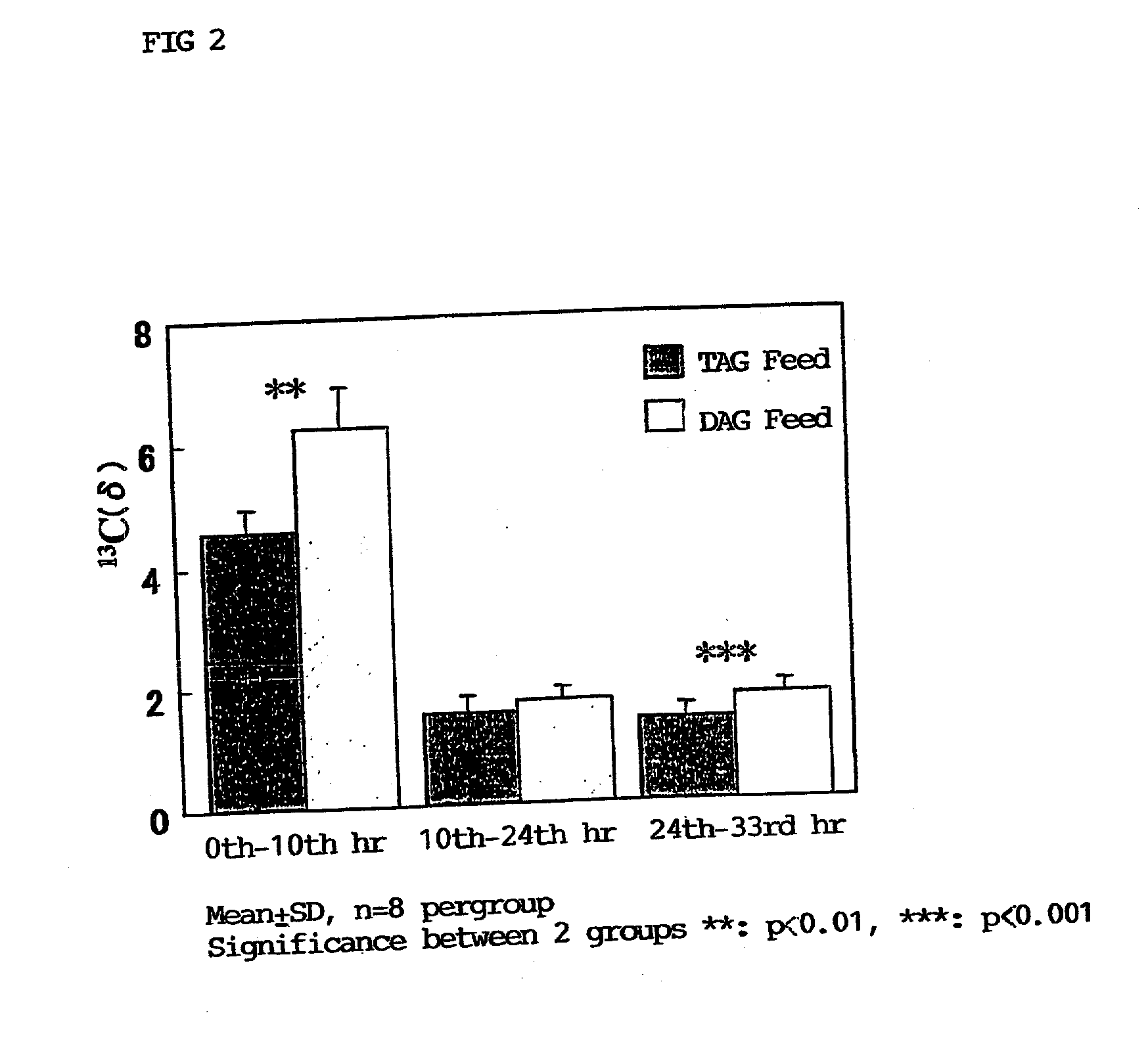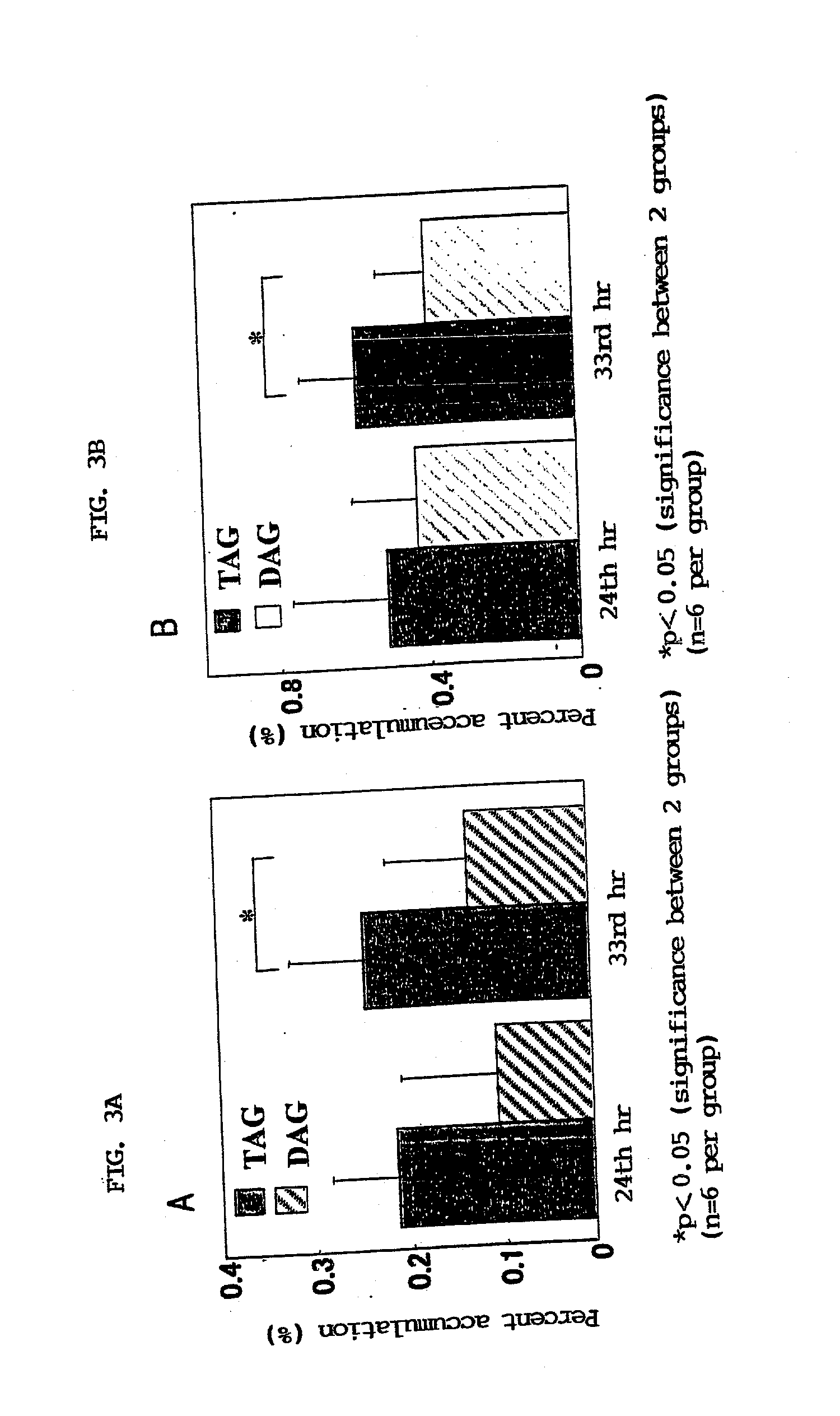Method for activating the lipid catabolic metabolism in enteric epithelium and improving the lipid metabolism in enteric epithelium
a catabolic metabolism and enteric epithelium technology, applied in the field of activating the lipid catabolic improving the lipid metabolism in enteric epithelium, can solve the problems of increasing the level of serum leptin and the inability to exhibit the inherent effect of leptin, no specific method for storing fatty acids has been proposed to date, and no specific method has been proposed. to achieve the effect of increasing the total energy consumption, facilitating the burning
- Summary
- Abstract
- Description
- Claims
- Application Information
AI Technical Summary
Benefits of technology
Problems solved by technology
Method used
Image
Examples
example 1
Small Intestine Perfusion Test
[0108] The following test was conducted in accordance with the method described in J. Lipid Res., 39, 963 (1998).
[0109] Under anesthesia, Wistar rats (male, 6 weeks old) were each incised at the abdomen, and a cannula ("PE50", trade name; product of Clay Adams, Inc.) was arranged right underneath the pylorus. By a restraint gauge, an emulsion of triacylglycerols or diacylglycerols (triacylglycerols of diacylglycerols calculated as fatty acids: 90 mM, sodium chloride: 0.15 M, 10 mM tris-HCl buffer: q.s. to pH 7.0, taurocholic acid: 10 mM) was perfused at a rate of 4.5 mL / hr (Experiment 1). Five hours later, the perfusing was stopped, and 1 mL of RI-labeled fatty acids was promptly injected together with the emulsion of triacylglycerols or diacylglycerols (Experiment2). Namely, Experiment 1 was conducted such that the final concentration of [carboxy-.sup.14C]TO (triolein) or 1,3-[carboxy-.sup.14C]DO (diolein) reached 3.2.times.10.sup.6 dpm / mL, while Exper...
example 2
Induction of Small Intestine Lipid Metabolic Gene Expression by the Ingestion of Diacylglycerols
[0111] Wistar rats (male, 7 weeks old) were each fed with an experimental feed with 20% of a diacylglycerol-containing oil composition or soybean oil contained therein and reared for 7 days. On the last day, those rats were each dissected to sample the tissue of the small intestine. From the tissue of the small intestine, RNA was isolated, and by Northern blotting, the expressed quantity of a lipid metabolism associated (.beta.-oxidation) enzyme (MCAD: medium-chain acyl-CoA dehydrogenase) mRNA was analyzed. The results are shown in Table 4.
7 TABLE 4 Soybean Oil or fat compo- Oil or fat compo- oil sition B sition E MCAD mRNA 100 130 145 Shown in terms of relative value when the expressed quantity of the MCAD mRNA in the case of soybeans was supposed to be 100.
[0112] By the ingestion of the diacylglycerol-containing oil or fat compositions B or E, the expression of the small intestine lipid...
example 3
Inhibition Test of Triacylglycerol Synthesis in the Small Intestine Epithelium
[0113] Using FCS(fetal calf serum)-free, Dulbecco's modified Eagle's medium (D-MEM) with 5% FBS and 70 .mu.g / mL kanamycin added therein, a rat small-intestine epithelial cell strain, IEC-6, was incubated under 5% CO.sub.2 at 37.degree. C. Individual fatty acids (oleic acid, linoleic acid, .gamma.-linolenic acid, arachidonic acid, .alpha.-linolenic acid, eicosapentaenoic acid, and docosahexaenoic acid) were formed into complexes with 250 .mu.M fatty-acid-free bovine serum albumin, and were added at a concentration of 200 .mu.M, respectively. Twenty-four hours later, the individual cultures were washed with PBS and subsequent to treatment with tripsin, were peeled off from Culture dishes. Those cultures were separately suspended in portions of HBSS which contained Nile Red (100 ng / mL). Subsequent to incubation at room temperature for 5 minutes or longer, FACS analysis was conducted. From average fluorescence...
PUM
| Property | Measurement | Unit |
|---|---|---|
| Fraction | aaaaa | aaaaa |
| Fraction | aaaaa | aaaaa |
| Fraction | aaaaa | aaaaa |
Abstract
Description
Claims
Application Information
 Login to View More
Login to View More - R&D
- Intellectual Property
- Life Sciences
- Materials
- Tech Scout
- Unparalleled Data Quality
- Higher Quality Content
- 60% Fewer Hallucinations
Browse by: Latest US Patents, China's latest patents, Technical Efficacy Thesaurus, Application Domain, Technology Topic, Popular Technical Reports.
© 2025 PatSnap. All rights reserved.Legal|Privacy policy|Modern Slavery Act Transparency Statement|Sitemap|About US| Contact US: help@patsnap.com



